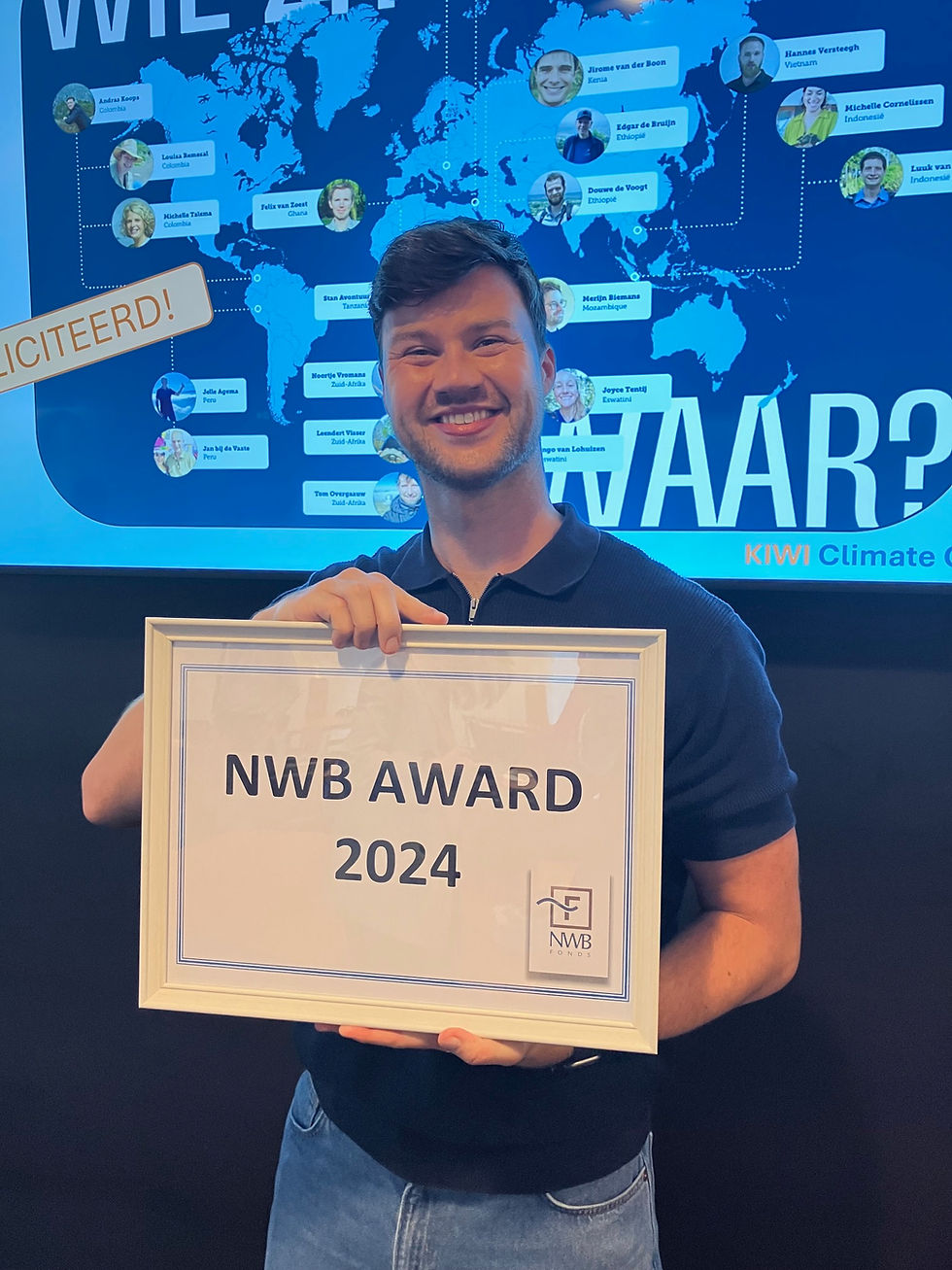Protecting Water Infrastructure in Laos Against Extreme Weather
- mwierda6
- Aug 9, 2024
- 3 min read
Updated: Apr 8

The NWB Fund supports a project by Wereld Waternet in Laos, exploring how the country's water infrastructure can be protected against the impacts of extreme weather. This is becoming an increasingly frequent issue due to climate change. Measures are needed to secure the drinking water supply and limit damage. Nature-based solutions may provide a viable answer.
Since 2017, Wereld Waternet has been involved in encouraging Laotian drinking water companies to provide more people with access to clean and sufficient drinking water. These companies are being encouraged to take steps to operate as independent and healthy businesses. This is primarily achieved through knowledge exchange, sharing Dutch technical expertise. Together with the Laotians, they determine which examples and elements from Dutch practices can work well in Laos – and which cannot. Since 2017, Wereld Waternet has had positive experiences with this approach through meetings and interactive training sessions. There is no shortage of motivation and cheerfulness in the Laotian workplace.
Since 2022, the project has expanded to include a focus on climate change. And not without reason: due to rising temperatures, longer droughts, and increased monsoon rains, Laos is high on the list of countries affected by a changing climate. In particular, the northern part of the country is dealing with steep, often deforested slopes, which lead to large volumes of runoff rainwater and mudslides. At the same time, the monsoon rains are starting later, and the dry season, which currently lasts for 7 months a year, will continue to lengthen in the future.
This is taking a toll on Laotian drinking water companies, which rely on the availability of natural sources. The increasingly extreme weather requires infrastructure that is more resilient and can cope with fluctuations in supply and quality. This calls for a smart combination of the right structural investments. Experience shows that, in anticipation of those investments, the Laotians are champions at coming up with new, improvised solutions.
Photos: Regular water flow at the start of the dry season (top) and a rise of more than 10 meters in water levels (bottom) in the Nam Khan (Khan River) in Luang Prabang. The concrete column under the red roof is the intake facility for drinking water production.
Thanks to co-financing from the NWB Fund, Wereld Waternet is working with the responsible ministry, drinking water companies, and other local partners on an exploratory climate study. The aim is to first assess which locations are facing challenges for drinking water production and distribution due to climate change, and secondly, to identify which types of measures are most promising for these locations. Due to strong relationships and intensive collaboration over the past years, this study will be conducted in two provinces simultaneously: Luang Namtha and Oudomxay. Because of the many geographical, cultural, and administrative similarities with other regions in the country, we expect the results to be replicable. These results will form the basis for attracting larger investments at the national level, with the co-financing from the NWB Fund acting as a catalyst.
Research shows that working with natural solutions (so-called nature-based solutions), such as reforestation or planting vegetation, is sustainable and effective. Agroforestry is also being considered: combining trees, plants, and various forms of agriculture has a positive effect on erosion and sedimentation. Trees and vegetation provide stability to the soil through their roots, which reduces erosion, slows down water flow, and filters sediments. These systems also promote a healthy soil structure and biodiversity. Additionally, "hard" technical solutions are being explored, such as climate-resilient replacement of pipelines or intake facilities. The final results are expected by the end of 2024.
Thanks to the climate team: Vincent van der Linden (Waterschap Limburg), Steffie Bes (Wereld Waternet), and Peter Jansen (Wereld Waternet).
Figure: The districts within the Luang Namtha province (upper two subfigures) and Oudomxay province (lower two subfigures) within the scope of our climate study.
Figure: Large-scale rubber production (monoculture) in the region leads to soil depletion, lower groundwater levels, increased susceptibility to erosion on slopes, and an unnatural demand for irrigation water. By applying agroforestry principles in collaboration with plantation owners, agriculture becomes more sustainable, ensuring a healthier water and nutrient cycle.
Figure: Exposed pipeline in Sing district (Luang Namtha), vulnerable to washout or damage from falling rocks. The water utility repairs this pipeline approximately six times a year due to damage caused by falling rocks, which leads to reduced production. Several solutions are possible at this location: burying or relocating the pipeline, or creating barriers with natural materials to protect against erosion on the slopes.









